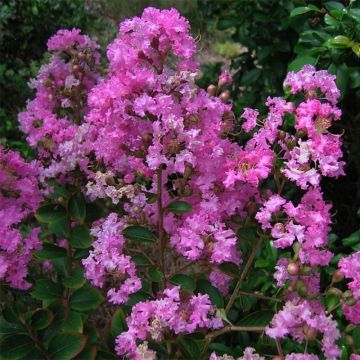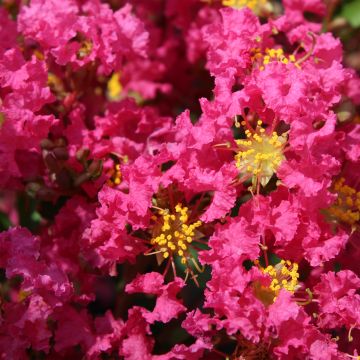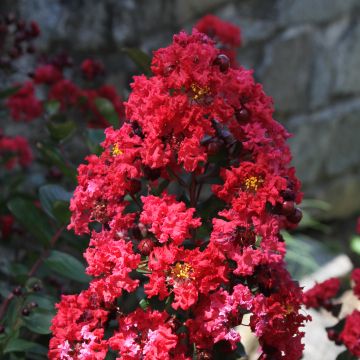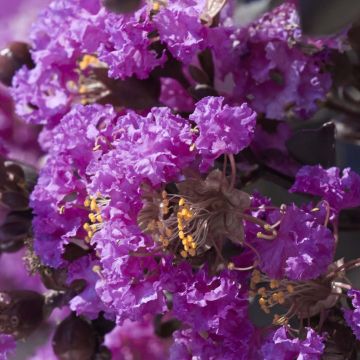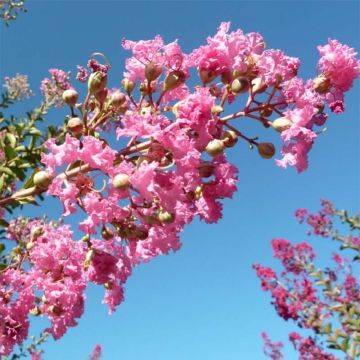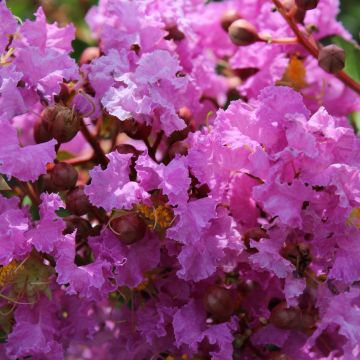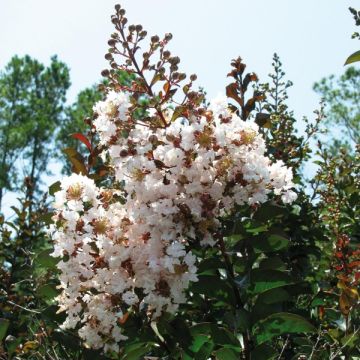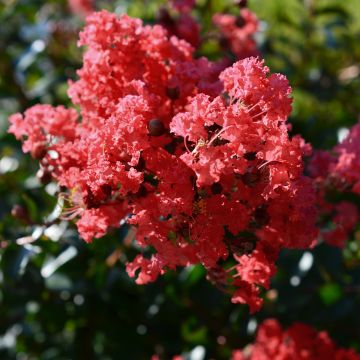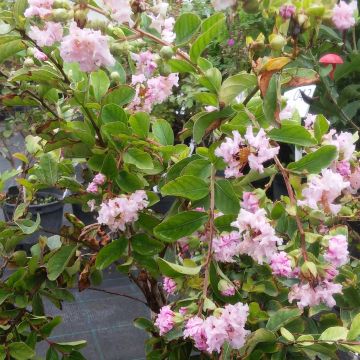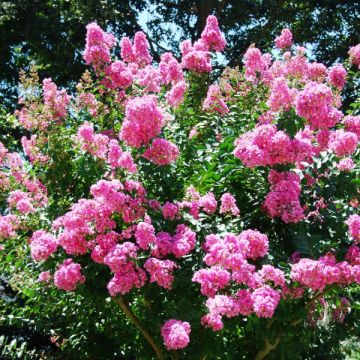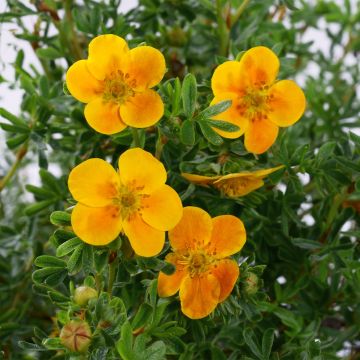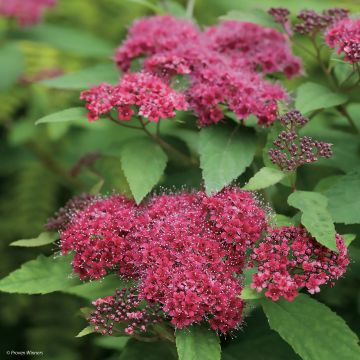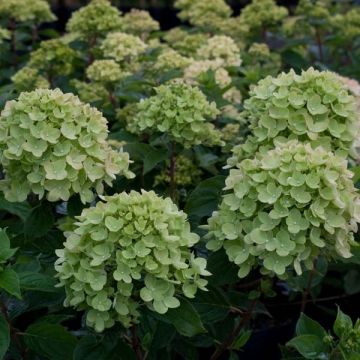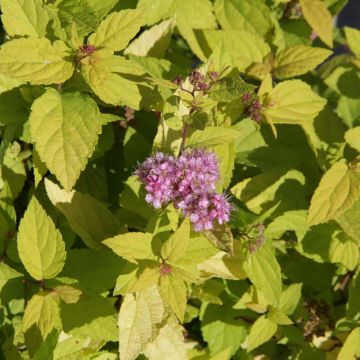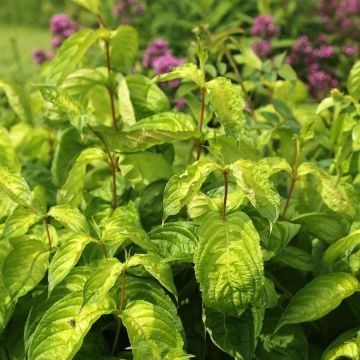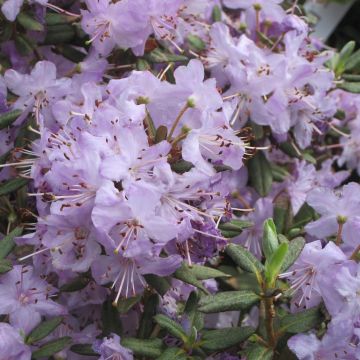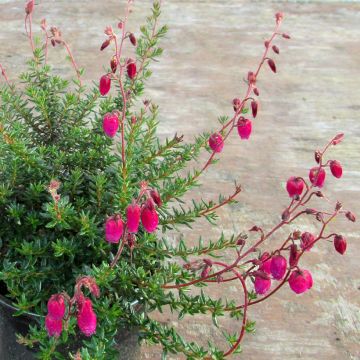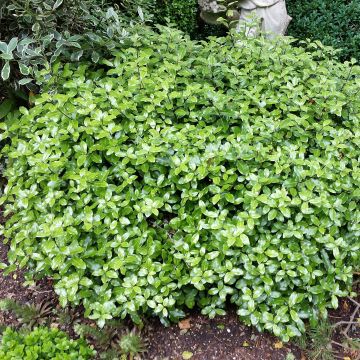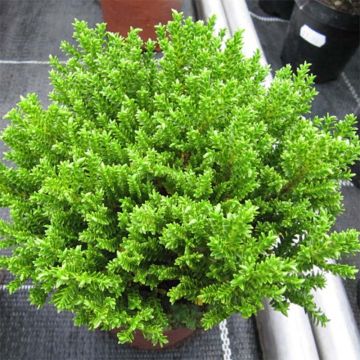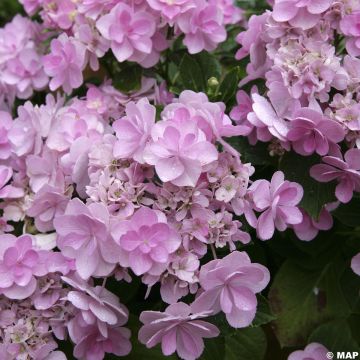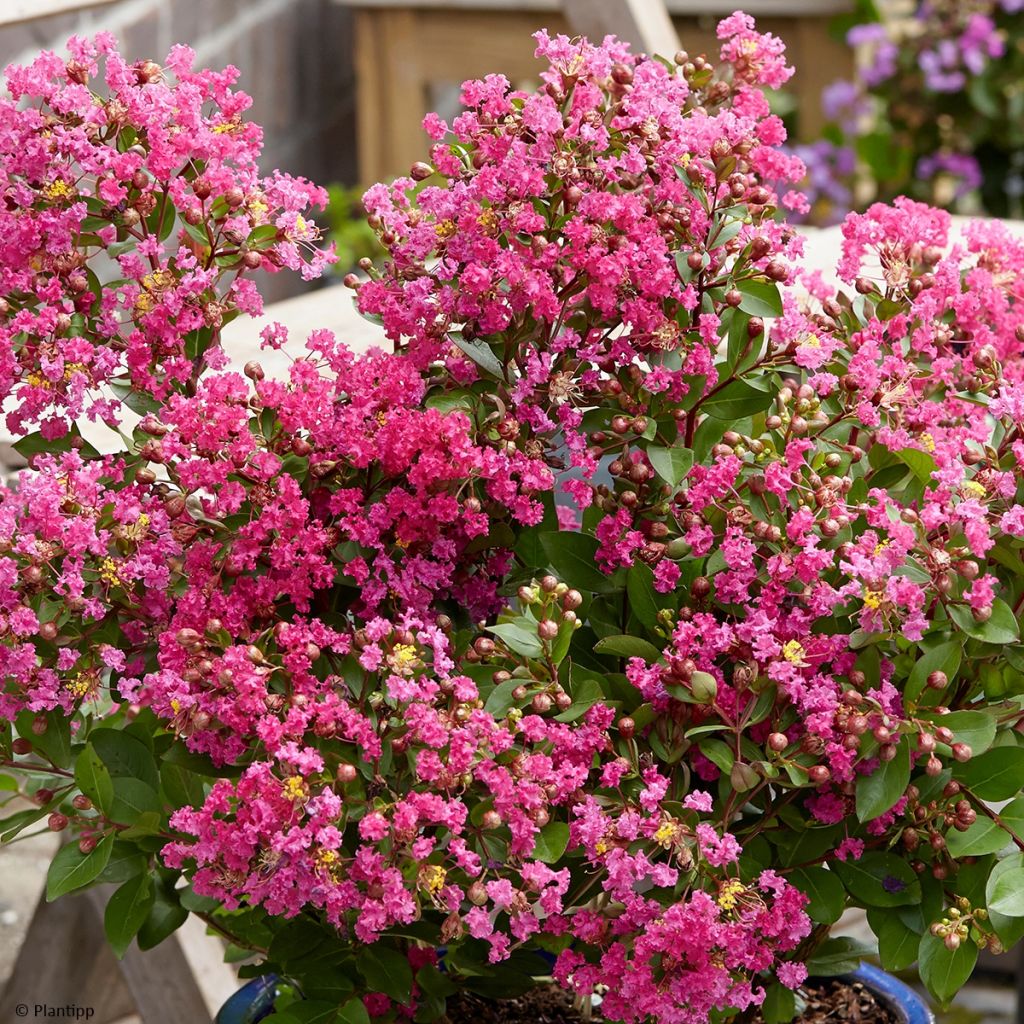

Lagerstroemia indica With Love Kiss - Crape Myrtle
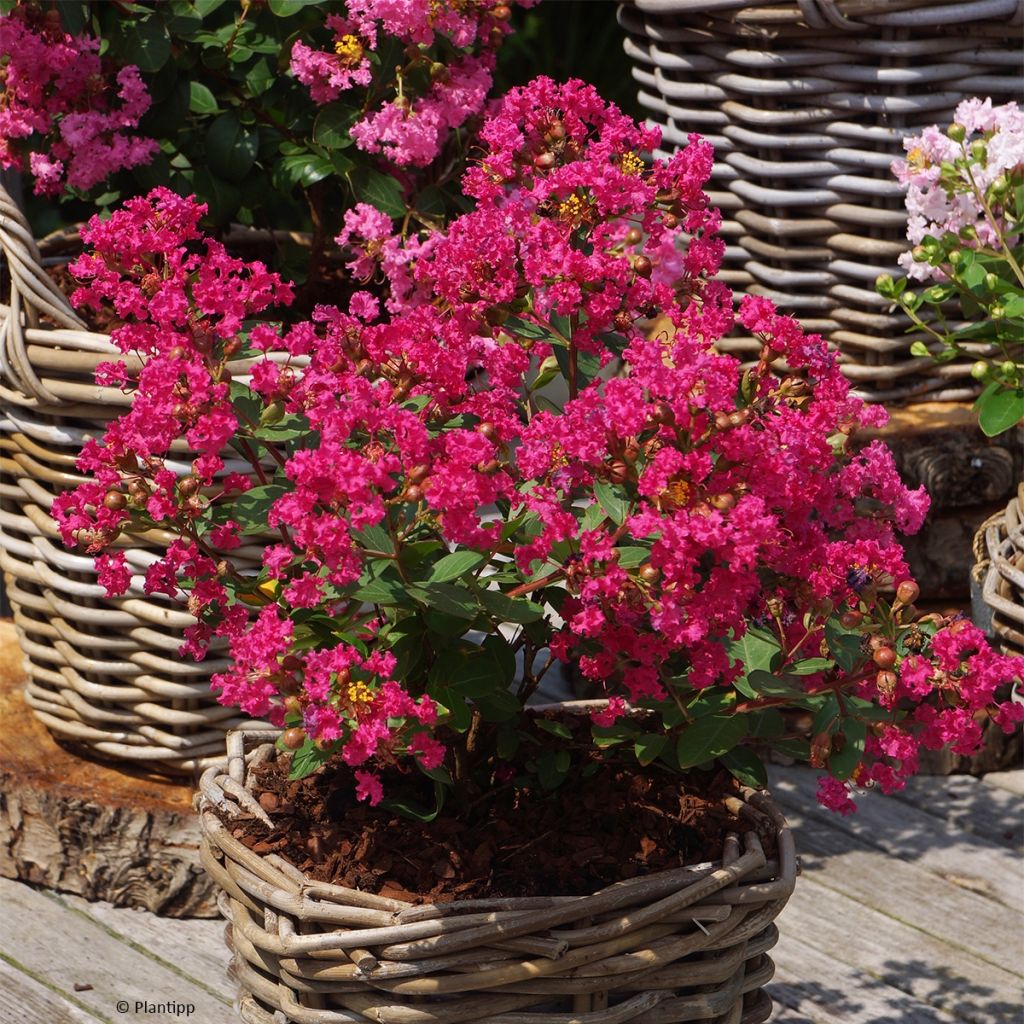

Lagerstroemia indica With Love Kiss - Crape Myrtle
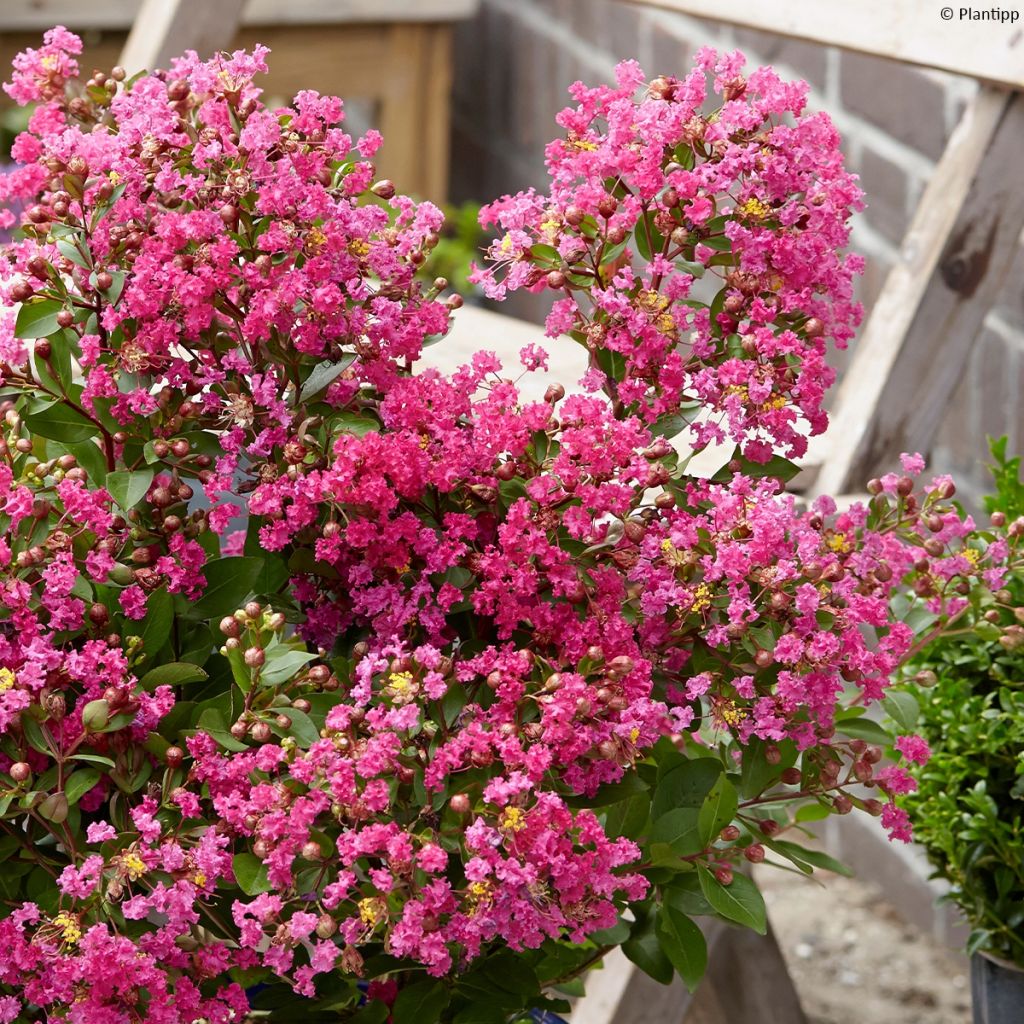

Lagerstroemia indica With Love Kiss - Crape Myrtle
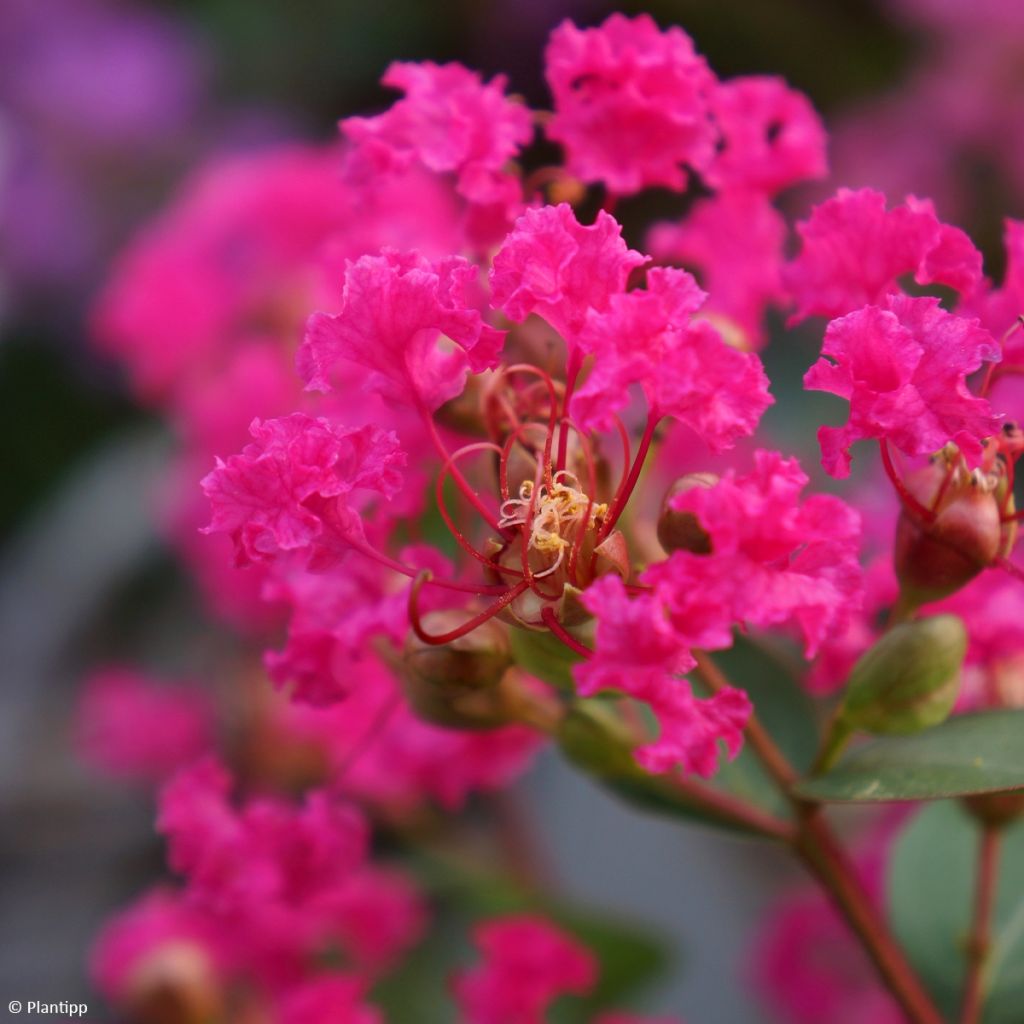

Lagerstroemia indica With Love Kiss - Crape Myrtle
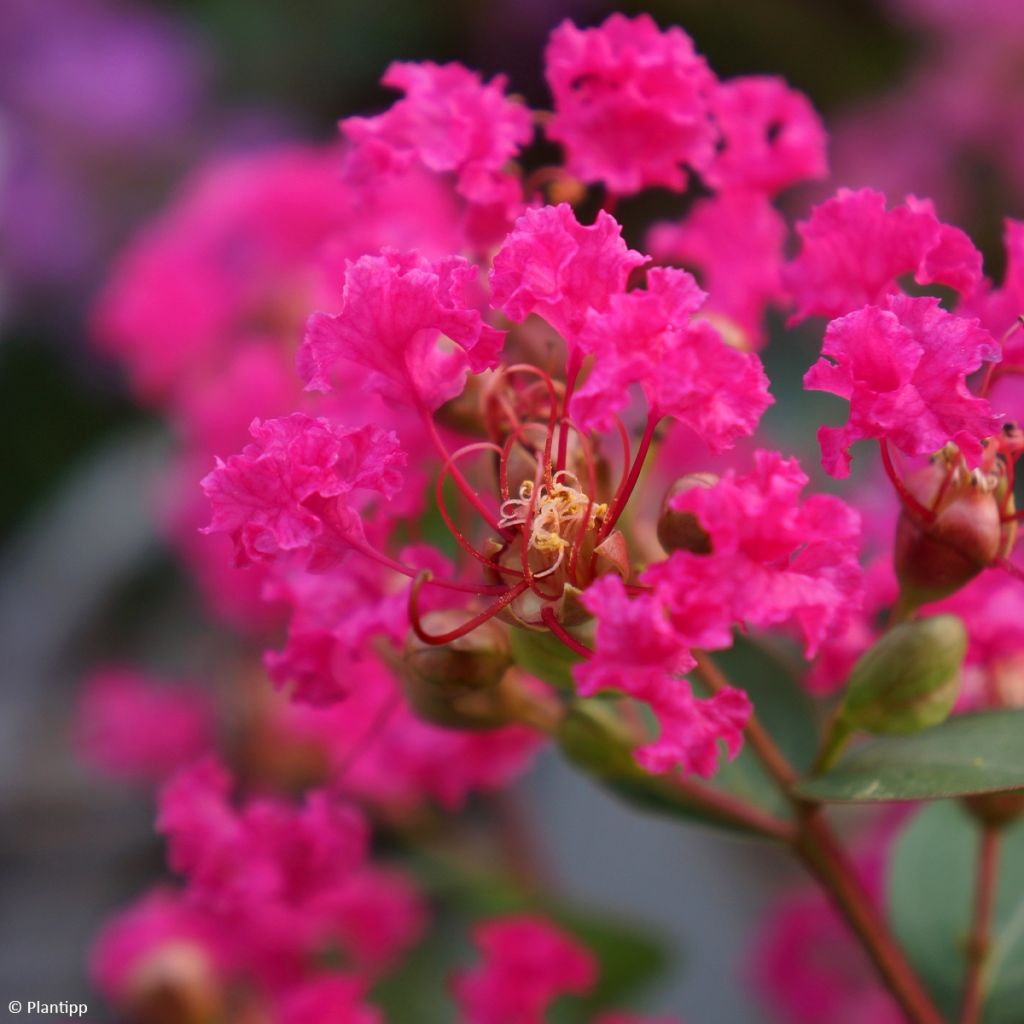

Lagerstroemia indica With Love Kiss - Crape Myrtle
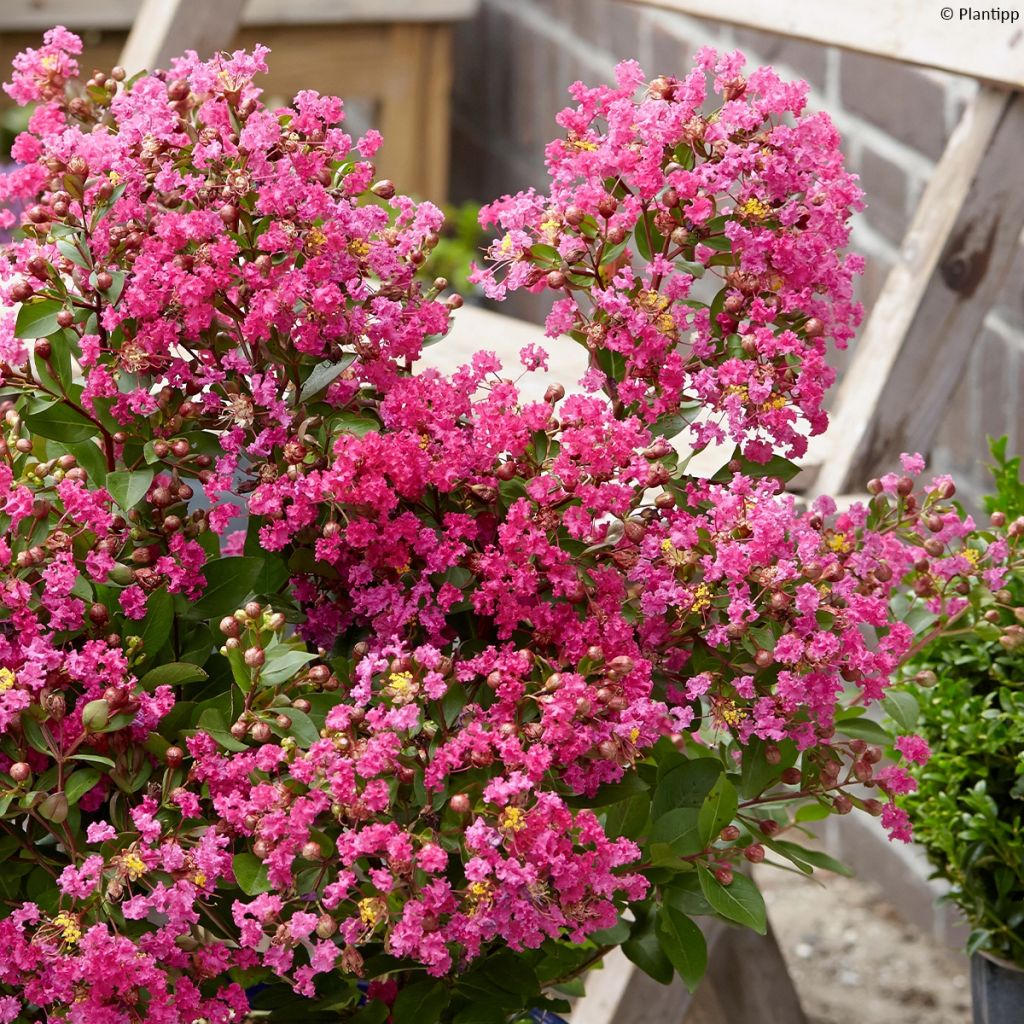

Lagerstroemia indica With Love Kiss - Crape Myrtle
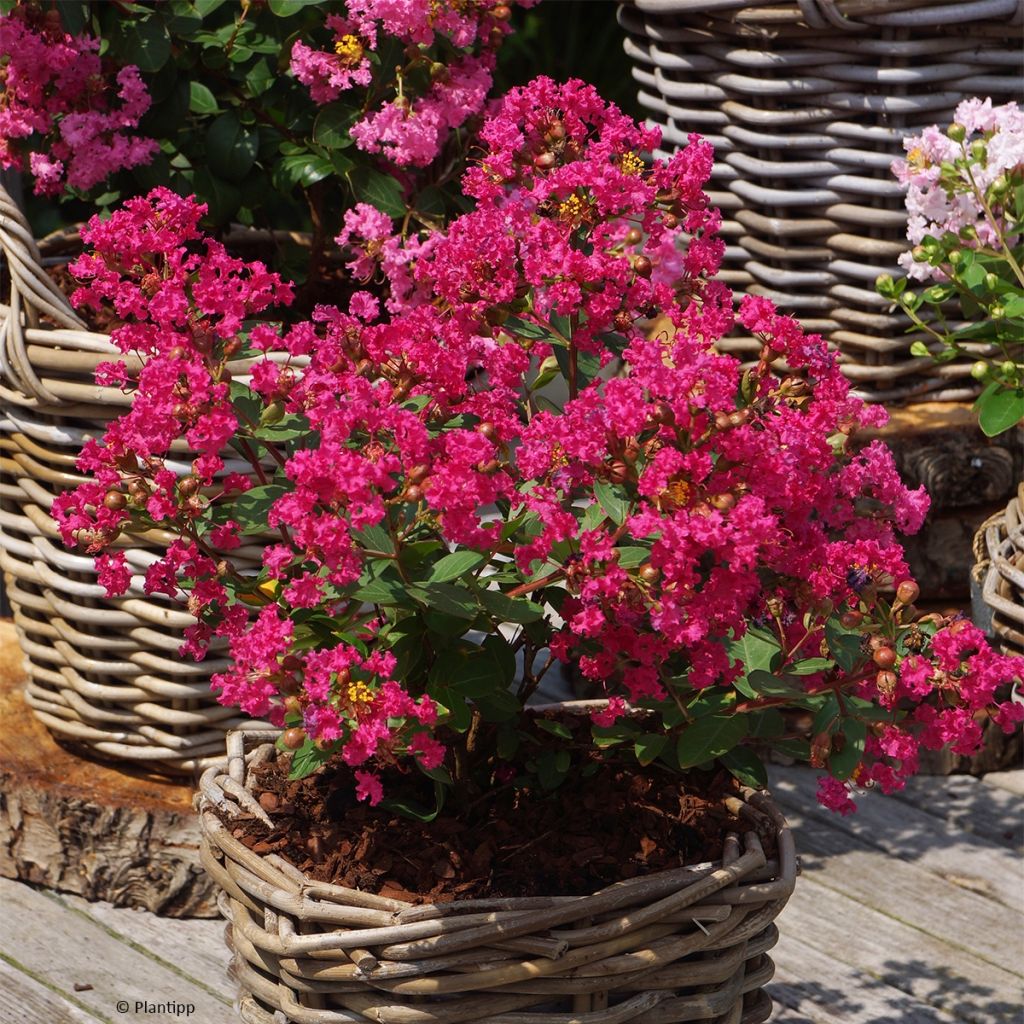

Lagerstroemia indica With Love Kiss - Crape Myrtle
Lagerstroemia indica With Love Kiss - Crape Myrtle
Lagerstroemia indica With Love Kiss ('Milarosso')
Crape Myrtle, Crepe Myrtle, Indian Lilac
Very lovely healthy dwarf bush, young red leaves, then shiny green. Flowering to follow!
Charlyne, 24/04/2022
This item cannot be shipped to the selected country
Delivery charge from €5.90
Delivery charge from €5.90
Delivery to Corse prohibited
More information
Schedule delivery date,
and select date in basket
This plant carries a 24 months recovery warranty
More information
We guarantee the quality of our plants for a full growing cycle, and will replace at our expense any plant that fails to recover under normal climatic and planting conditions.
From €5.90 for pickup delivery and €6.90 for home delivery
Express home delivery from €8.90.
From €5.90 for pickup delivery and €6.90 for home delivery
Express home delivery from €8.90.
Delivery to Corse prohibited: UE law prohibits the import of this plant from mainland France to Corse as part of the fight against Xylella fastidiosa. Please accept our sincere apologies.
More information
Does this plant fit my garden?
Set up your Plantfit profile →
Description
The Lagerstroemia indica 'Kiss' ('Milarosso) is a beautiful dark pink variety of the 'With Love' series, which brings together truly compact Indian lilacs with generous summer flowerings, well resistant to frost, perfect for ornamenting pots and small gardens. This one produces numerous foamy clusters in a gradient from dark pink to lighter pink. Summer Lilacs are also appreciated for their richly coloured bark, ornamental all year round, as well as their beautiful autumn colours. These bushes love heat, but appreciate a little freshness in summer to support their flowering.
The Lagerstroemia indica 'Kiss', obtained in Italy, is part of a series of hybrids carefully selected for their compactness, their precocity, their floribundus and their hardiness. The Indian lilacs 'With Love' come in pale pink (Babe), mauve purple (Eternal), bright pink (Girl), pure white (Virgin) and dark pink (Kiss).
The Indian Lilac 'With Love Kiss' Milarosso belongs to the Lythraceae family, just like the Lagerstroemia indica, from which it originates. Small in size, this plant will reach approximately 70 cm (27.6 in) in height and 40 cm (15.7 in) in width at ripeness. Its growth is rather slow. It chooses the month of July to start its flowering, which will continue until September. The large inflorescences, in ramified clusters, are composed of very numerous small flowers borne by thin pedicels. Each flower has five petals with a very undulate edge, the texture of which resembles that of crepe. They are gathered in large, dense panicles, at the end of the year's branches. This flowering attracts bees and butterflies.
In 'Kiss', the floral buds bloom widely into deep pink flowers that fade over the hours, creating a very cheerful gradient on the scale of the bush. The foliage emerges bronze in spring, then becomes vivid green and glossy. It is composed of ovate leaves, which take on orange or coppery hues in autumn, depending on the climate, before falling. Finally, its bark is beautifully decorative: smooth, beige striate with grey, brown-red, peeling off in coloured plates (cinnamon, faded red, old pink, cream).
The Indian Lilacs prefer humidity and heat. If appropriate care is given, this bush also deserves to be acclimated in colder areas and Kiss With Love is a good option. You can plant it alone, but it will also be valuable in a shrub massif, a flowering hedge, or emerging from a mound of perennials. Its long summer flowering can be complemented by that of early and spring-flowering bushes. The Japanese Quince Red Joy will thus produce superb bright red flowers from March, before the appearance of leaves, which will evolve in autumn into decorative yellow fruits. The classic but indispensable Philadelphus coronarius will take over with its pure white flowers in May-June, with an absolutely irresistible scent. To extend the season beyond the flowering of our Lagertroemia 'Kiss With Love', give it the neighbourhood of a bush with decorative fruits, like a Snowberry or a Callicarpa. Even better, the Leycesteria formosa Golden Lanterns, a Pheasant Tree too little known despite its many qualities, which include its decorative fruits until November, provides a white and red flowering at the same time as that of 'Kiss With Love', as well as a golden foliage that will create a happy contrast all season!
NB: Karl Von Linnaeus named this tree to pay tribute to his friend Magnus Von Lagestroem (1696 – 1759), who had sent it to him from India for identification. Originally, this tree was used to decorate Chinese temples. We would like to point out that this tree produces fruits that have a narcotic action if ingested.
Report an error about the product description
Lagerstroemia indica With Love Kiss - Crape Myrtle in pictures
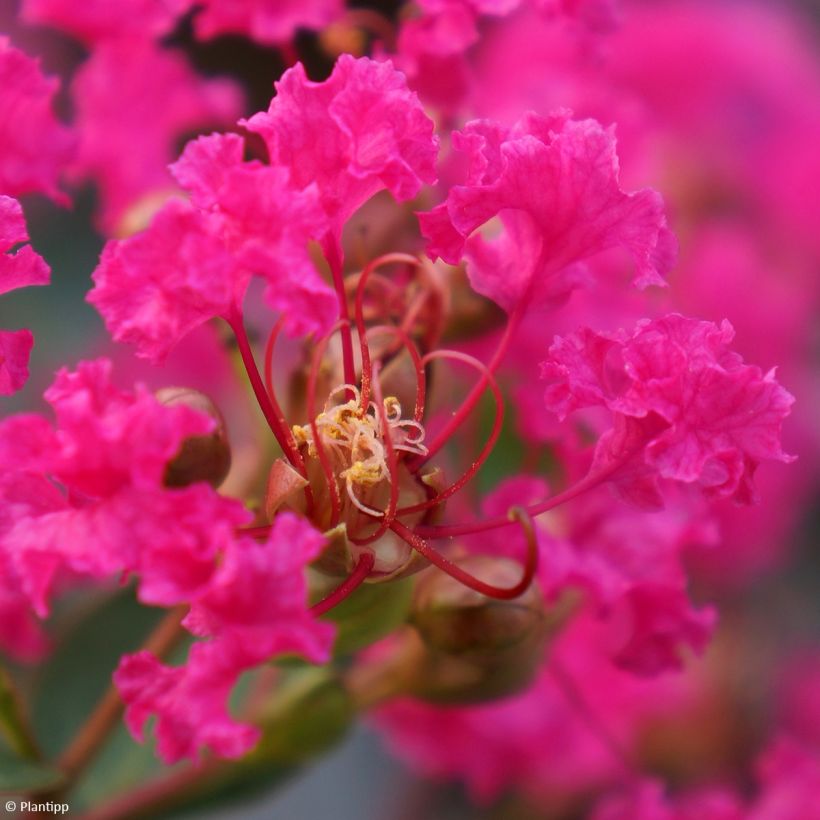

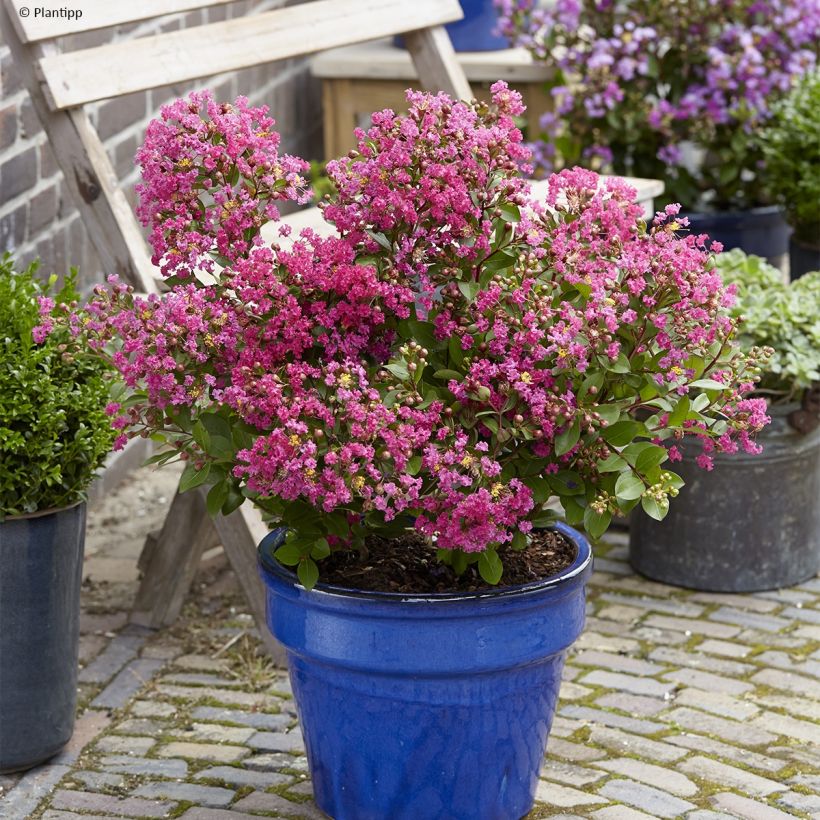

Plant habit
Flowering
Foliage
Botanical data
Lagerstroemia
indica
With Love Kiss ('Milarosso')
Lythraceae
Crape Myrtle, Crepe Myrtle, Indian Lilac
Cultivar or hybrid
Other Lagerstroemia - Crape Myrtle
Planting and care
We advise you to plant the Lagerstroemia indica 'Kiss With Love' in the spring, when frosts are no longer to be feared, in a very sunny and sheltered position, in rich, rather fresh, well-drained soil and if possible slightly acidic, neutral or not very chalky. It will appreciate a contribution of compost and a thick layer of dead leaves, particularly during the first two winters in slightly cold climates. It is necessary to prune the flowering branches very short in February-March, leaving only 4 to 6 buds to balance its branches and stimulate the growth of future flower-bearing branches. Also remove weak twigs that will produce no flowers and poorly positioned branches.
Cultivation in a container or in a large pot is possible, and even recommended in climates where frosts are severe and prolonged. This bush, however, can withstand temperatures as low as -15°C (5 °F) at its peak, once it is old enough and well established.
Planting period
Intended location
Care
-
, onOrder confirmed
Reply from on Promesse de fleurs
Shrubs for pots
Haven't found what you were looking for?
Hardiness is the lowest winter temperature a plant can endure without suffering serious damage or even dying. However, hardiness is affected by location (a sheltered area, such as a patio), protection (winter cover) and soil type (hardiness is improved by well-drained soil).

Photo Sharing Terms & Conditions
In order to encourage gardeners to interact and share their experiences, Promesse de fleurs offers various media enabling content to be uploaded onto its Site - in particular via the ‘Photo sharing’ module.
The User agrees to refrain from:
- Posting any content that is illegal, prejudicial, insulting, racist, inciteful to hatred, revisionist, contrary to public decency, that infringes on privacy or on the privacy rights of third parties, in particular the publicity rights of persons and goods, intellectual property rights, or the right to privacy.
- Submitting content on behalf of a third party;
- Impersonate the identity of a third party and/or publish any personal information about a third party;
In general, the User undertakes to refrain from any unethical behaviour.
All Content (in particular text, comments, files, images, photos, videos, creative works, etc.), which may be subject to property or intellectual property rights, image or other private rights, shall remain the property of the User, subject to the limited rights granted by the terms of the licence granted by Promesse de fleurs as stated below. Users are at liberty to publish or not to publish such Content on the Site, notably via the ‘Photo Sharing’ facility, and accept that this Content shall be made public and freely accessible, notably on the Internet.
Users further acknowledge, undertake to have ,and guarantee that they hold all necessary rights and permissions to publish such material on the Site, in particular with regard to the legislation in force pertaining to any privacy, property, intellectual property, image, or contractual rights, or rights of any other nature. By publishing such Content on the Site, Users acknowledge accepting full liability as publishers of the Content within the meaning of the law, and grant Promesse de fleurs, free of charge, an inclusive, worldwide licence for the said Content for the entire duration of its publication, including all reproduction, representation, up/downloading, displaying, performing, transmission, and storage rights.
Users also grant permission for their name to be linked to the Content and accept that this link may not always be made available.
By engaging in posting material, Users consent to their Content becoming automatically accessible on the Internet, in particular on other sites and/or blogs and/or web pages of the Promesse de fleurs site, including in particular social pages and the Promesse de fleurs catalogue.
Users may secure the removal of entrusted content free of charge by issuing a simple request via our contact form.
The flowering period indicated on our website applies to countries and regions located in USDA zone 8 (France, the United Kingdom, Ireland, the Netherlands, etc.)
It will vary according to where you live:
- In zones 9 to 10 (Italy, Spain, Greece, etc.), flowering will occur about 2 to 4 weeks earlier.
- In zones 6 to 7 (Germany, Poland, Slovenia, and lower mountainous regions), flowering will be delayed by 2 to 3 weeks.
- In zone 5 (Central Europe, Scandinavia), blooming will be delayed by 3 to 5 weeks.
In temperate climates, pruning of spring-flowering shrubs (forsythia, spireas, etc.) should be done just after flowering.
Pruning of summer-flowering shrubs (Indian Lilac, Perovskia, etc.) can be done in winter or spring.
In cold regions as well as with frost-sensitive plants, avoid pruning too early when severe frosts may still occur.
The planting period indicated on our website applies to countries and regions located in USDA zone 8 (France, United Kingdom, Ireland, Netherlands).
It will vary according to where you live:
- In Mediterranean zones (Marseille, Madrid, Milan, etc.), autumn and winter are the best planting periods.
- In continental zones (Strasbourg, Munich, Vienna, etc.), delay planting by 2 to 3 weeks in spring and bring it forward by 2 to 4 weeks in autumn.
- In mountainous regions (the Alps, Pyrenees, Carpathians, etc.), it is best to plant in late spring (May-June) or late summer (August-September).
The harvesting period indicated on our website applies to countries and regions in USDA zone 8 (France, England, Ireland, the Netherlands).
In colder areas (Scandinavia, Poland, Austria...) fruit and vegetable harvests are likely to be delayed by 3-4 weeks.
In warmer areas (Italy, Spain, Greece, etc.), harvesting will probably take place earlier, depending on weather conditions.
The sowing periods indicated on our website apply to countries and regions within USDA Zone 8 (France, UK, Ireland, Netherlands).
In colder areas (Scandinavia, Poland, Austria...), delay any outdoor sowing by 3-4 weeks, or sow under glass.
In warmer climes (Italy, Spain, Greece, etc.), bring outdoor sowing forward by a few weeks.

































